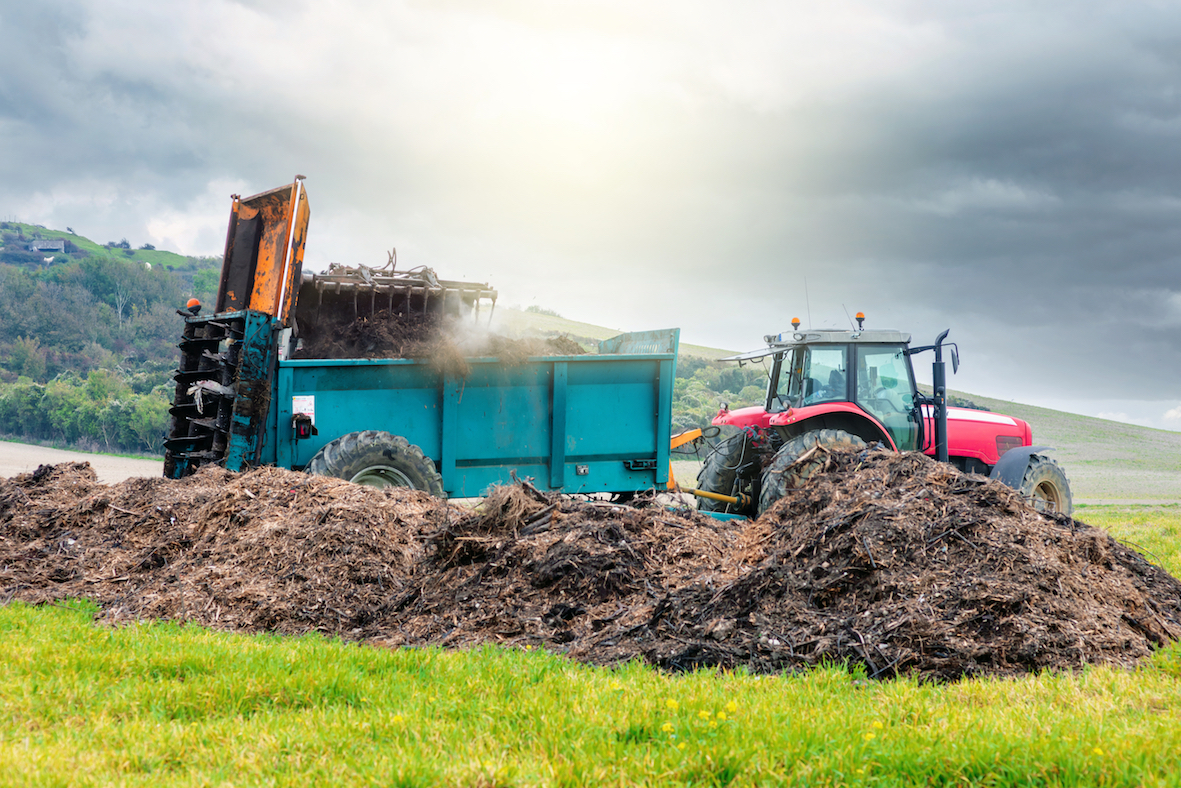Health Warning: Don’t read this whilst eating your sustainably produced cornflakes at breakfast.
In the last article, we discussed the value of livestock manures in Sustainable (Intensive) Agriculture. We now consider two other sources of plant nutrients, namely biosolids and green manure.
Biosolids
All methods of sewage treatment create organic sludge as a by-product and these are managed and treated separately from the remaining liquid sewage.
Untreated primary liquid sewage can’t enter the water environment because of its high oxygen content, and its potential to carry harmful bacteria.
The water treatment process has several iterations, but a common one is anaerobic digestion under heat. Anaerobic digestion is a sequence of processes by which microorganisms break down biodegradable material in the absence of oxygen.
The secondary biosolids, sometimes used directly in agriculture with restricted use legislation, or further treated in a tertiary process of disinfection with chlorine or UV, represent a good source of soil conditioners in the form of fertilizer.
Another possibility is to add green waste to produce compost.
With further processes, such as filtration, this water can even be used for human consumption (potable water).
In the UK, around 60% of the initial sludge is used in agriculture, whilst the remaining 40% has a range of minor uses. Once dewatered, it’s disposed of, either as sanitary landfill (not in the UK), or incinerated to produce an easier-to-handle inert ash. However, the disposal of sludge in the ocean, which was once common practice in coastal areas, is becoming rarer and bans are emerging across the globe.
Biosolids can come in the form of liquids, pellets, or cake, and are frequently supplied free of charge. They often provide modest amounts of macronutrients and some important micronutrients (copper, zinc, calcium, magnesium, manganese, molybdenum, boron and iron), and are useful in reducing soil acidity.

In terms of their application, the advice provided in our previous article on manures transfers nicely, with soil injection being the preferred method (perhaps more so because of ammonia’s strong odour).
When using other methods, legislation often covers the time before incorporation is required, the need to notify local residents, the use of odour neutralizing chemicals and, most importantly, the time before harvesting or for consumption of the end product.
In most countries, there are restrictions on end use and these are normally related to prohibition on human consumption crops, such as milling wheat and malting barley.
The use of biosolids isn’t without controversy. Some of it is the visceral reaction to producing edible crops using human waste and the reaction to odours.
Although there’s a large variation, biosolids contain Potentially Toxic Elements (PTE) such as cadmium, lead and mercury. There are claims of contaminants by narcotics, human hormones, antibiotics, salmonella and a host of other pathogens, although this is much more problematic on untreated sewerage, which should never be used in agriculture.
Nevertheless, the responsible use of biosolids by appropriate risk management, mitigation and legislation (such as in the case of PTE levels), leaves a product that’s entirely consistent with S(I)A’s goals and aspirations.
Green Manures
Green manures are popular in organic farming systems and some livestock systems, but have only gained limited traction in conventional arable farming.
Much of the discussion here is borrowed from organic farming, which we’ll cover in detail in later articles. Organic farmers can also use SA/SIA principles and there are things to learn from them.
Green manures can be conveniently divided into two subcategories:
- Legumes, which can fix nitrogen, such as pulses and clover.
- Non-Legumes, such as cereals, oilseeds/brassicas, or a seeding combination of both, which can’t fix nitrogen.
If the green manure crop is overwintered, there are suitable hardy varieties of legumes, such as vetches, that can be used and cereals, such as rye and oats. These are known as “covering crops”.

There are numerous benefits to the soil in terms of improving the its organic matter and structure, diversifying species, increasing earthworm numbers, smothering weeds, preventing runoff and leaching and, in the case of legumes, supplying nitrogen.
Green manure can also be introduced into a standing commercial crop as an inter-planted or catch crop, which can benefit weed suppression. They also have a useful role in Integrated Pest Management (IPM).
After harvest methods involve creating a cover crop post-harvest and then terminating that crop, either with herbicide or, in the case of either an organic or conventional farm system, using a crimp roller before the crop sets seed (a conventional roller doesn’t kill the cover crop and it will not kill alfalfa, which is a perennial, and red clover, which is a biennial).

Another benefit is to deliberately let go difficult grass species, such as blackgrass, before termination takes place. They can also be used as a livestock grazing crop.

There’s no need to plough in this green manure and it can be used as part of a min-till or no-till system, meaning it’s consistent with the S(I)A goals.
In the UK, these types of practices are suddenly gaining new attention following the post-Brexit introduction of the Environment Land Management (ELM) subsidy scheme, which replaces the EU acreage driven system.
Green manure is one of the stewardship actions, which will attract payments as an action that benefits the environment and the public.
Some of the systems include leaving land to fallow and using green manure, which is consistent with SA, but less so with SIA, unless production can be made up elsewhere (not necessarily in the same crop year).
Conclusion
As with livestock manure, both biosolids (used responsibly) and green manure are compatible with SA/SIA and, in the case of the latter, are probably underutilized in arable crops.
More work is required if we’re to find the best way to manage green manures, and research data is thin as it stands…

Other Opinions You Might Be Interested In…
- Sustainable Agriculture: Arable Nitrogen Use
- Sustainable Agriculture: Tackling Fertilizer Waste Head-On
- Sustainable Agriculture: Manure and Slurry

